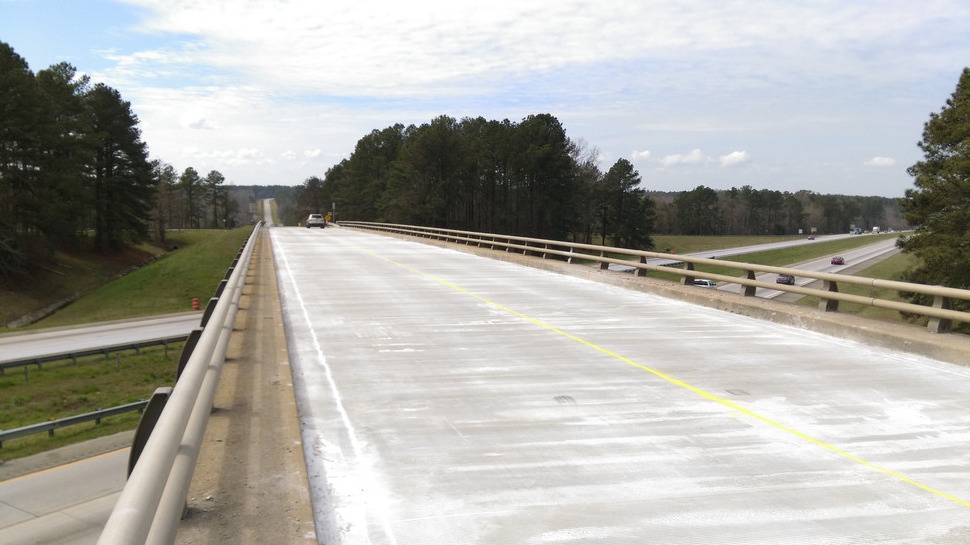
Until recently, the Georgia Department of Transportation (GDOT) was not familiar with using Rapid Set® Cement for latex-modified concrete overlay projects. Georgia DOT had several latex-modified concrete overlay projects that had been awarded and concrete producer Heartland Concrete, Petersburg, Va., had recommended the use of Rapid Set Cement, in place of Type III portland cement, to help meet the “fast return to service” turnaround time and avoid the possibility of penalties due to potential delays.
GDOT’s current specification calls for the use of Type III portland cement, which takes 24 hours to reach the specification’s strength requirement of 2500 psi, before allowing traffic on the overlay. Heartland Concrete’s initial request for converting a project to Rapid Set Cement was denied. This prompted CTS Cement Manufacturing to contact GDOT and make an official request for the DOT to allow the use of Rapid Set Cement on a future project.
Working together with GDOT personnel, the DOT requested the Rapid Set® Latex-Modified Concrete (RSLMC) mix design to be tested at their materials lab in Forest Park, Ga., to qualify the mix. Results from the mix design exceeded the 2500 psi requirement in three hours rather than the 24 hours needed with the Type III portland cement. With this performance, Heartland Concrete and general contractor Massana Construction, Tyrone, Ga., were given the approval to use Rapid Set Cement on an upcoming overlay project located on Route 150 over I-20 in Thomson, Ga. The project involved a two-lane bridge that was 375 feet long. A total of 50 cubic yards of RSLMC was placed on the project.
The bridge was closed on Friday evening, March 3, 2017, and had to be repaired and open by 5 a.m. on Monday morning, March 6. The bridge carries a great deal of truck traffic due to an Advance Auto Parts distribution center located on the north side of I-20. Through the night on Friday, 1½ - 2 inches of the bridge’s surface material was to be removed by IVS Hydro Inc., Parkersburg, W.Va., using hydro demolition. The debris was then to be vacuumed up immediately and contained. Massana Construction then needed four to five hours for screed setup to ensure the new overlay was placed at the same elevation as the previous surface. The new overlay was scheduled to be placed at noon on Saturday.
After encountering some unexpected delays in the first 24 hours of the closure period, the overlay was rescheduled for 10 a.m. on Sunday morning. The Rapid Set Latex Modified Concrete (RSLMC) was placed using a volumetric mixer and completed by 3:30 p.m. on Sunday afternoon. The RSLMC overlay achieved 3,200 psi in three hours. Due to the fast-setting properties of the RSLMC, surface grooving was able to start at one end of the bridge just as Massana was finishing the placement at the opposite end.
The next morning at 5 a.m., the bridge was open and traffic resumed. While the road was temporarily stripped, the schedule was met despite the delays encountered, and no penalties were assessed -- proving to all involved that the use of Rapid Set Cement can and will move a project along to help ensure a positive outcome.